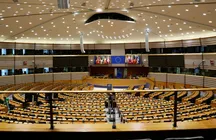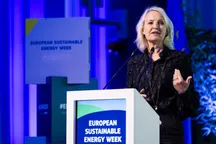
The Scope of the Lead Poisoning Crisis
Lead exposure is a pervasive issue, particularly in developing nations, where it is estimated that over 90% of the global burden of lead poisoning occurs. According to UNICEF, one in two children in these regions has concerning blood lead levels. The sources of this exposure are varied and include:
- Consumer Goods: Items such as paint, spices, cookware, and toys often contain lead.
- Industrial Contamination: Poorly regulated practices, especially in battery recycling, contribute significantly to lead pollution.
The consequences of lead exposure are dire. It is linked to irreversible cognitive impairments, with studies indicating an average reduction of 6 IQ points globally. Furthermore, maternal exposure can result in severe health outcomes for unborn children, including reduced fetal growth and increased risks of premature birth.
Economic Implications
The economic toll of lead exposure is staggering. It is estimated to cost the global economy approximately $1.4 trillion annually due to lost productivity and increased healthcare costs. This figure underscores the urgent need for effective interventions to mitigate lead exposure and its associated health impacts.
Objectives of the Partnership
The Partnership for a Lead-Free Future aims to unite governments, NGOs, private sector stakeholders, and communities in a concerted effort to eliminate childhood lead poisoning. Key objectives include:
- Raising Awareness: Educating communities about the dangers of lead exposure and promoting preventive measures.
- Policy Advocacy: Encouraging governments to implement stricter regulations on lead-containing products and industrial practices.
- Research and Innovation: Supporting studies that identify effective strategies for reducing lead exposure and improving health outcomes.
This initiative builds on past successes in reducing lead exposure globally, such as the successful elimination of lead from gasoline through coordinated international efforts in the early 2000s.
Similar Initiatives
The announcement of this partnership coincides with several other initiatives aimed at tackling environmental toxins:
- EPA's Lead Strategy: The U.S. Environmental Protection Agency (EPA) has developed a comprehensive strategy focused on reducing lead exposures across communities in the United States. This approach emphasizes environmental justice by targeting high-risk areas disproportionately affected by lead contamination.
- Global Health Initiatives: Organizations like the World Health Organization (WHO) are also prioritizing efforts to eliminate lead exposure through global health campaigns and partnerships aimed at raising awareness about the dangers of lead in consumer products.
- Philanthropic Efforts: Foundations such as Open Philanthropy are investing in research and advocacy aimed at creating a lead-free future. Their initiatives focus on funding projects that address both prevention and remediation of lead exposure.
The launch of the Partnership for a Lead-Free Future marks a pivotal moment in the global fight against childhood lead poisoning. With its ambitious goals and substantial funding, this initiative not only aims to protect children from the devastating effects of lead but also seeks to foster healthier communities worldwide. As awareness grows and collaborative efforts expand, there is hope that significant strides can be made toward a future free from this preventable yet harmful toxin.







